MICROSCOPE
MAKER:Plössl & Co.
MODEL: Plössl Nr 20
c.1870's (after 1868)
SIGNED ON THE BODY TUBE: Plöfsl & Cie, in Wien
SIGNED ON THE PLATE ATTACHED TO THE FOOT:
M. KIR. ALL. (Magyar Királyi Állami) MECHANIKAI ES ELEKTROMOS, IPARI SZAKISKOLA, BUDAPEST(Royal Hungarian Vocational School of Mechanics and Electrical Engineering, Budapest)
AUTHOR: Barry Sobel
EDITORS: Joe Zeligs and Jurriaan de Groot
Please Click On Any Picture for a Larger Version
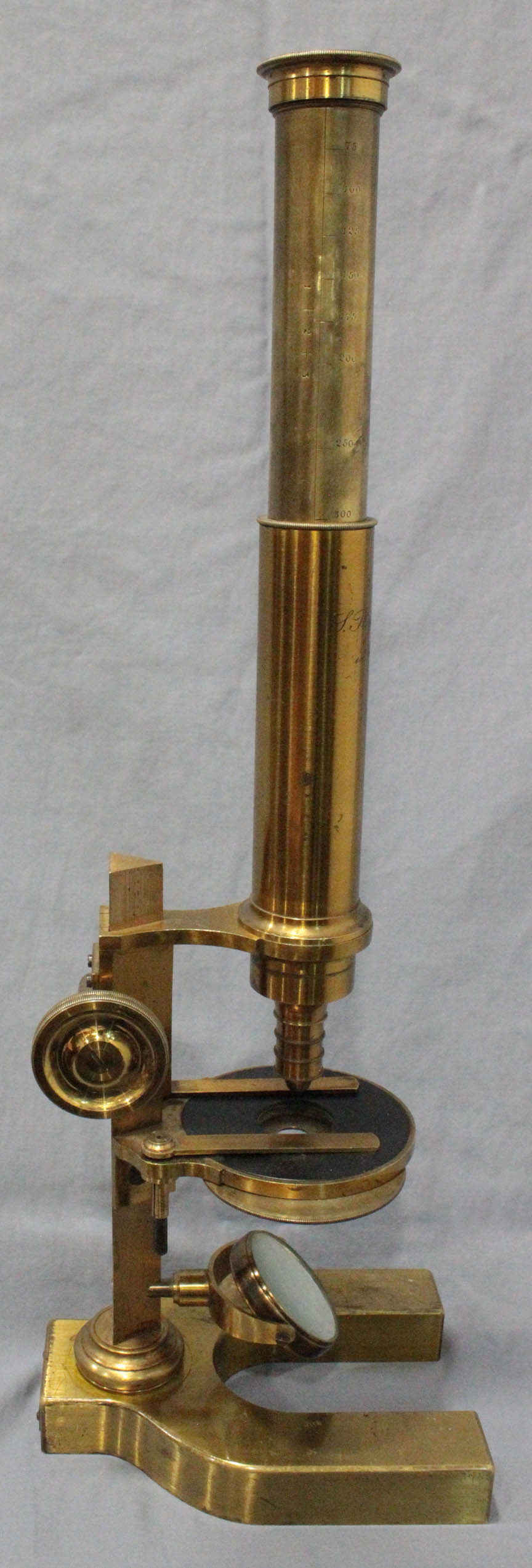
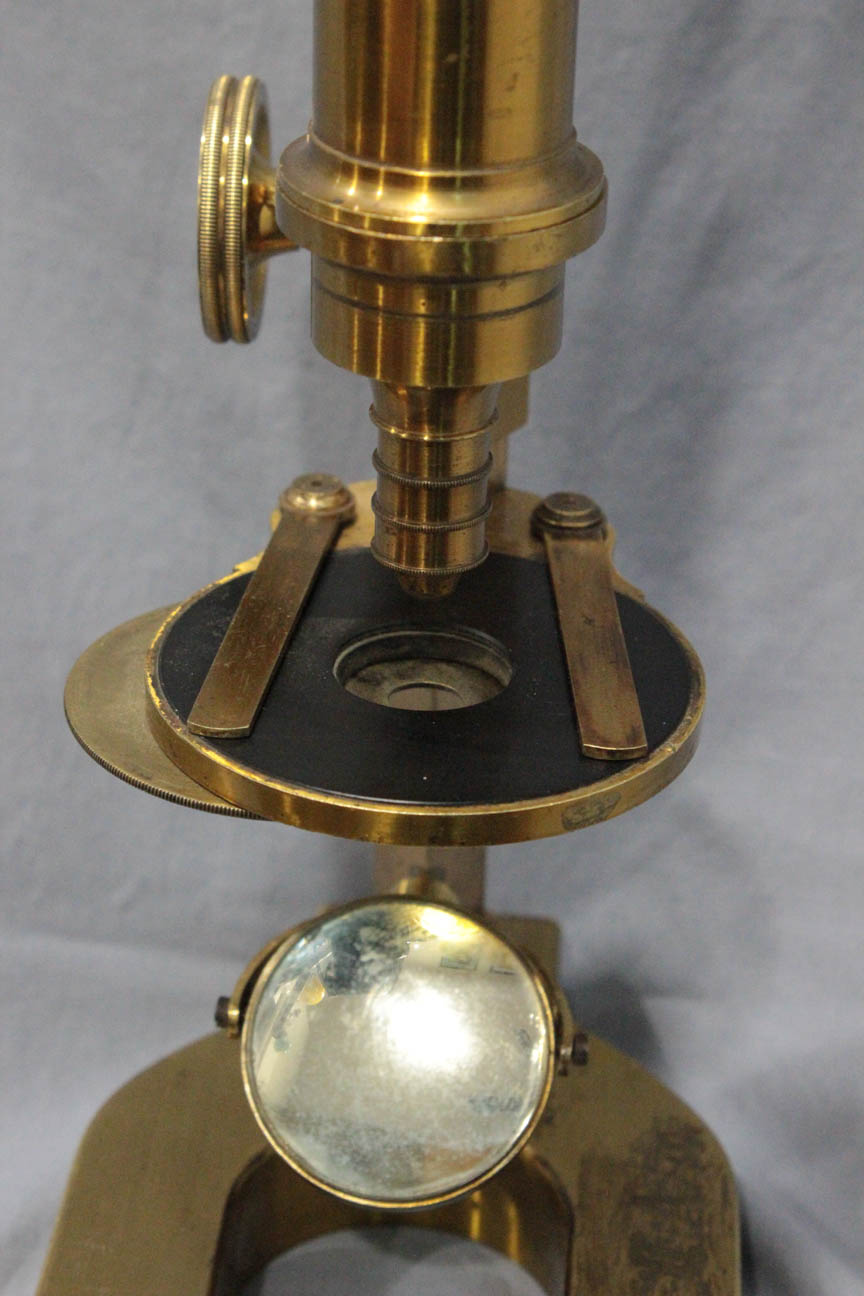
>
DESCRIPTION:
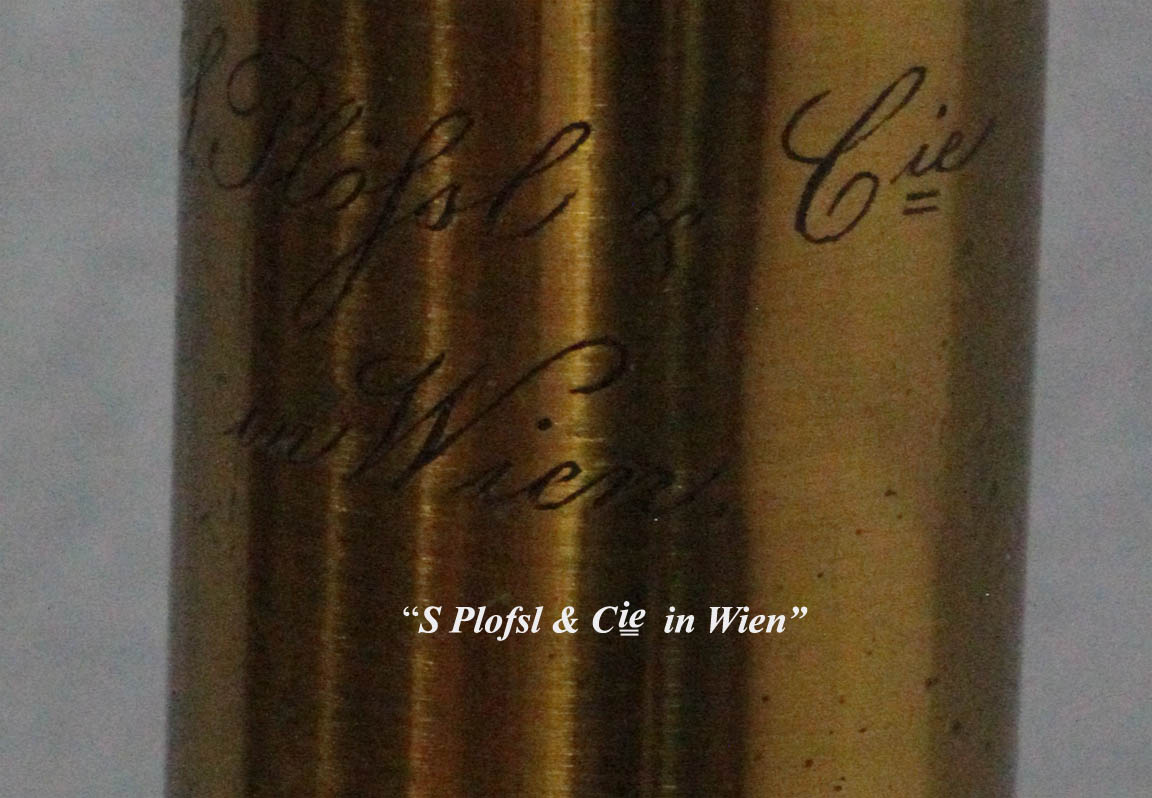
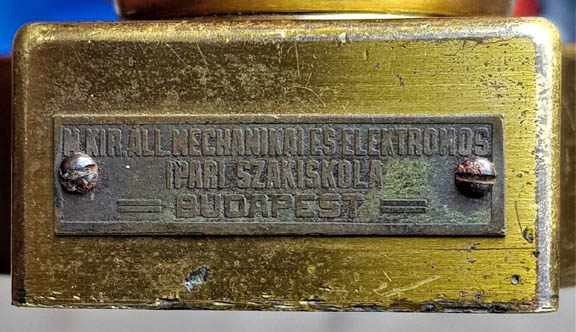 This is a Plossl & Company microscope signed in fancy script:
This is a Plossl & Company microscope signed in fancy script: Plofsl & Cie, in Wien
on the optical tube. There is a small brown metal plate screwed to the back of the foot labeled in block letters: M. KIR. ALL. (Magyar Királyi Állami) MECHANIKAI ES ELEKTROMOS, IPARI SZAKISKOLA, BUDAPEST
(Royal Hungarian Vocational School of Mechanics and Electrical Engineering, Budapest).
The triangular brass vertical limb is attached by a large screw to the foot and does not incline. Coarse focus to the optical tube is by rack and pinion, the rack machined directly into the limb. There is a single knurled knob on the right side of the microscope to control the focus. There is no fine focus.
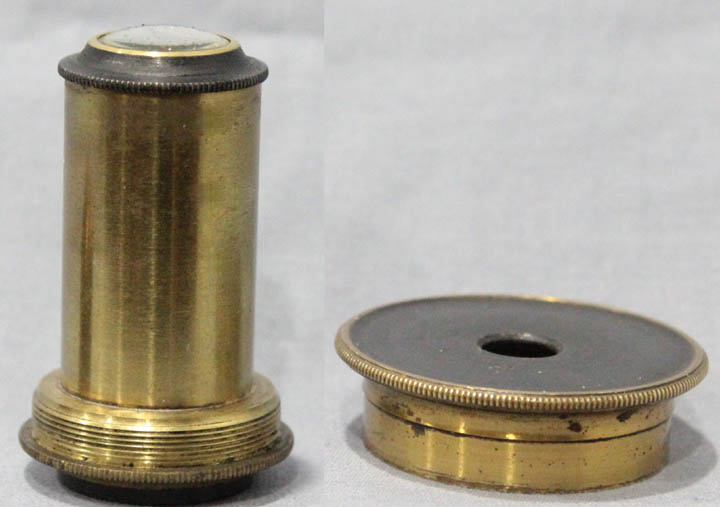
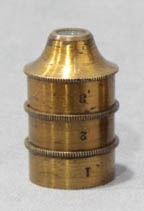
There is a single Huygenian eyepiece(left) which slips into the top of the draw tube, narrower end first, and is held in place by a black cap screwed to the top of the draw tube. (The outer threads on the top of the eyepiece itself are not used). There is a triple objective(right), with each component labeled 1,2, and 3 respectively. Near the bottom of the inside of the main optical tube is an optical element which is an erecting lens which renders the image upright and correctly oriented right to left so that moving the object being studied is not reversed as it would be in an ordinary microscope.
The body tube has a draw tube with two graduated scales.
One scale, from 0 to 300 is labeled 1 +2 +3
and shows the magnification with all three objective lenses in place. The second scale, from 25 to 50 is labeled 1 + 2
and indicates the resulting magnification with just lenses 1 and 2 in place.
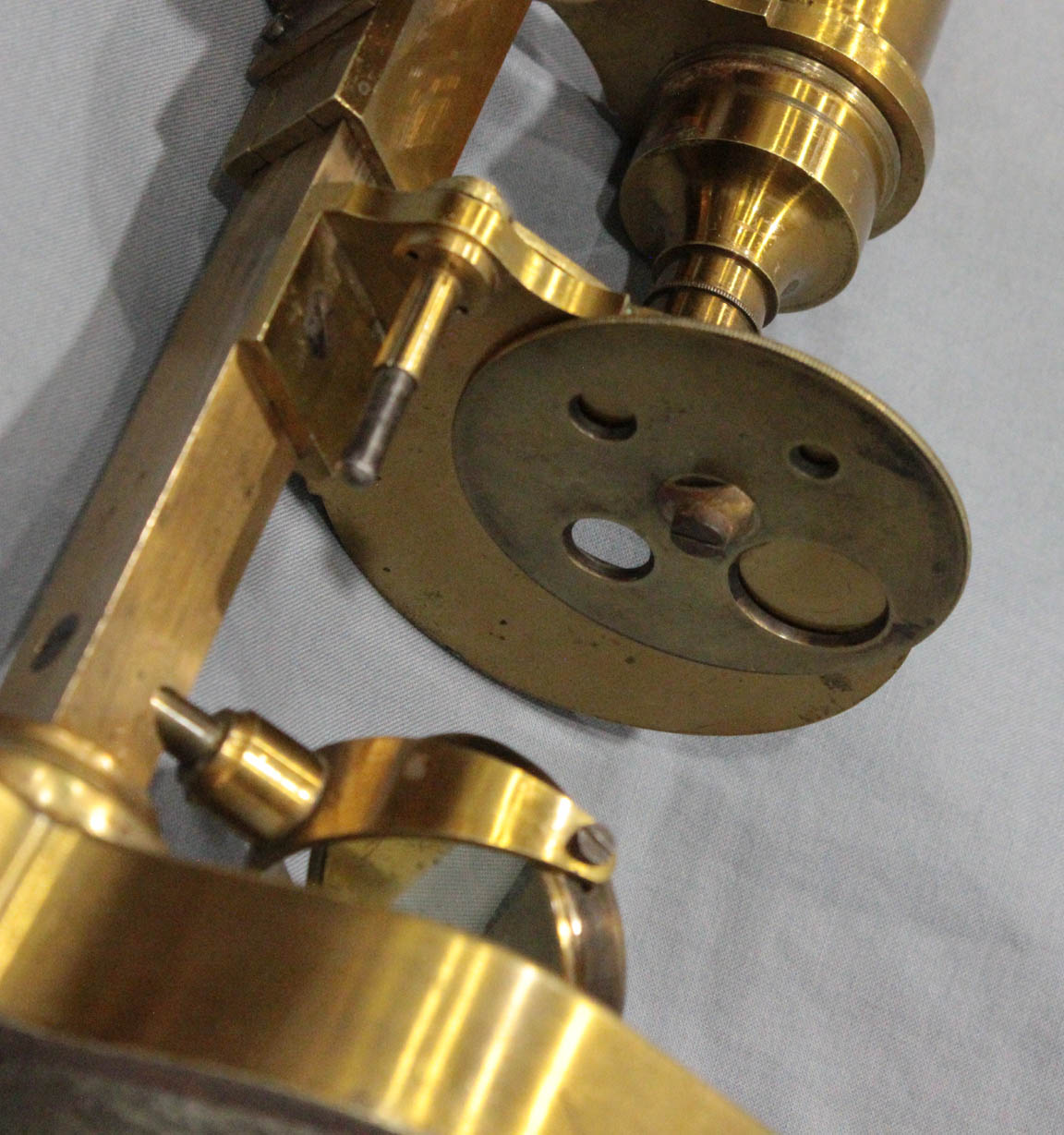
The round brass stage, screwed directly to the limb has a black hard rubber surface and, as shown to the left, a wheel of 4 different apertures attached to the underside of the stage. The gimbaled mirror is concave on one side and flat on the other and is fixed to the lower limb. There two removable straight stage clips with long posts fitting into the back of the stage.
HISTORY OF PLÖSSL MICROSCOPES, PLÖSSL & COMPANY, and HISTORY PERTAINING TO THIS MODEL:
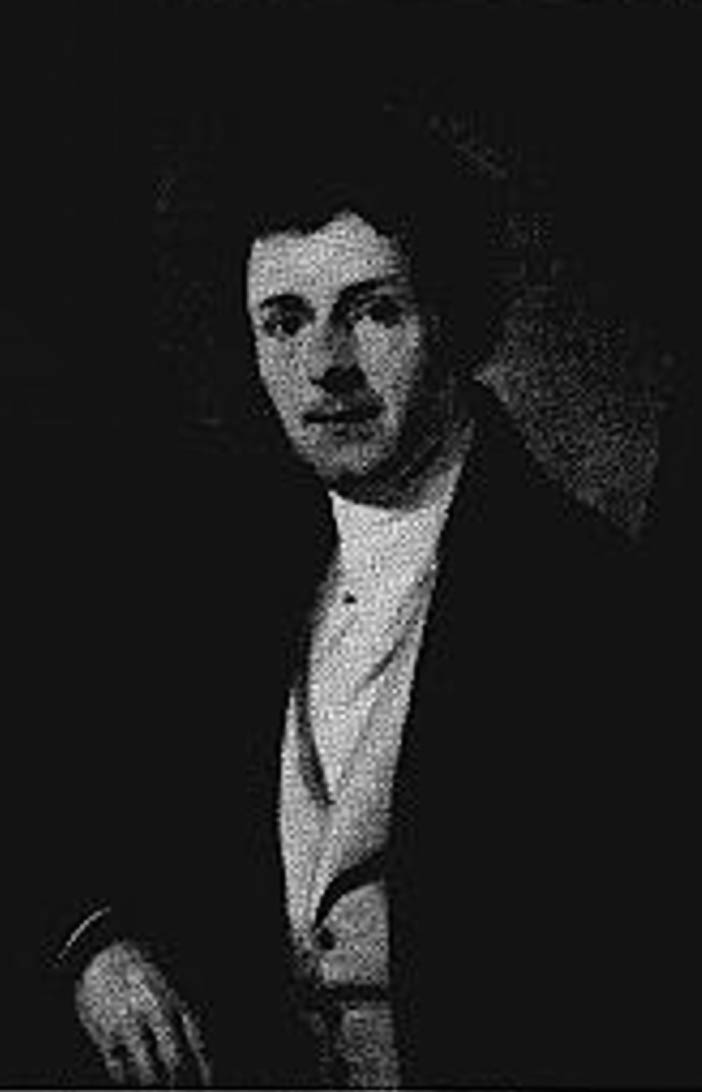 George Simon Plössl (1794-1868) was an apprentice to Johann Friedrich Voigtlander(1778-1857) until 1823 when Plössl opened his first workshop in Vienna in the former home of his parents. Plössl is famous for making all of his own lenses until the time of his death, and also inventing the Plössl eyepiece, still used today with modern telescopes. Evidence shows his first microscopes were made no later than 1826 and his first price list was from no later than 1828. The earliest larger compound Plössl microscopes typically stood on a folding tripod foot and had a straight limb and his eyepieces screwed in to the optical tube during this early period. By the 1850s, Plossl was making microscopes that stood on round bases instead of tripods, and the the eyepieces now inserted into the tube instead of screwing in. During this period the stage was round with a glass top surface. Plossl died after a serious accident on January 29, 1868. Plössl microscopes are very highly valued by collectors, and early models are very uncommon.
George Simon Plössl (1794-1868) was an apprentice to Johann Friedrich Voigtlander(1778-1857) until 1823 when Plössl opened his first workshop in Vienna in the former home of his parents. Plössl is famous for making all of his own lenses until the time of his death, and also inventing the Plössl eyepiece, still used today with modern telescopes. Evidence shows his first microscopes were made no later than 1826 and his first price list was from no later than 1828. The earliest larger compound Plössl microscopes typically stood on a folding tripod foot and had a straight limb and his eyepieces screwed in to the optical tube during this early period. By the 1850s, Plossl was making microscopes that stood on round bases instead of tripods, and the the eyepieces now inserted into the tube instead of screwing in. During this period the stage was round with a glass top surface. Plossl died after a serious accident on January 29, 1868. Plössl microscopes are very highly valued by collectors, and early models are very uncommon.
Starting after Plössl's death in 1868, the company became Plössl & Comp., and then later with signatures on the microscopes Plössl & Cie. Their catalog of 1874 had listings for their own new modern stands but also the older designs of Plössl himself, which they called the Plössl's
microscopes. But the Plössl's types no longer had folding tripod feet and featured round disk-shaped feet. These Plössl's microscopes continued to feature a triangular limb, just like the originals. Starting about 1875, the company started to transition from round feet to horseshoe shaped foot. Those of their own newer design had horseshoe feet. Some of the horseshoes resembled Seibert's and some were similar to the English/American type with a simple U shape (but no heel like the example at the top of this page). The use of only horseshoe feet is confirmed not only in the Plössl & Company catalog of 1874, but also in the price list of 1875 as well as in the description of the stands in the 1877 edition of Nageli and Schwendener, Das Mikroskop Theorie und Anwendug Desselben where it specifically states that the folding tripods were no longer available and only horseshoe feet provided. In the 1874 catalog the Plössl stands have the signature Plössl & Cie on the round foot and all the stands that remain extant seem to have signatures only on the round foot; this contrasts with the tube signature on the present example; their own modern stands were signed on the tube but in block letters.
On the example featured on this webpage above, the use of the long s
(f) may seem a bit puzzling in the engraving on the tube, since it was mostly abandoned by 1830, until one realizes that Plössl & Cie continued using this signature on their Plössl's
Models in the 1870's, as is evidenced on reviewed known examples. The foot of the microscope featured at the top of this webpage has a horseshoe foot and belonged to a school.
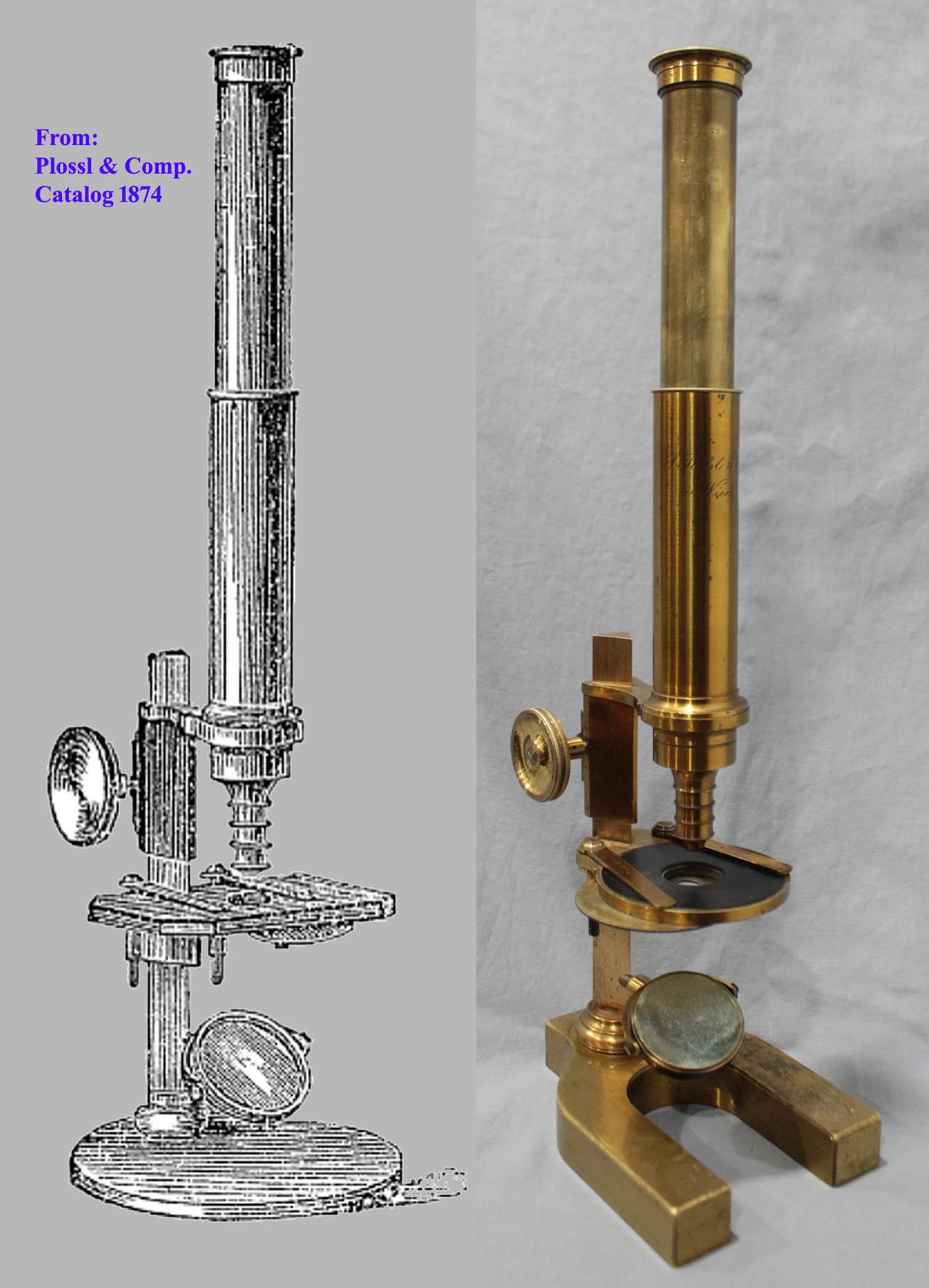
As can be seen in the comparison image to the left, the microscope featured on this page most closely resembles the Pl ssl model Nr 20 in the 1874 Pl ssl & catalog with the exceptions of the horseshoe foot and the fact that the catalog example has a square stage instead of a round one, and ours is not covered with glass. The round stage is of the type that Plössl himself frequently provided on his microscopes in earlier years. According to the catalog, this is a:
Large preparation microscope, round base, fixed stage covered with glass, adjustment by rack and pinion, mirror with double movement, 3 achromatic lenses and 1 ocular; microscope gives erect images, therefore objects can be prepared very easily. All in a polished box
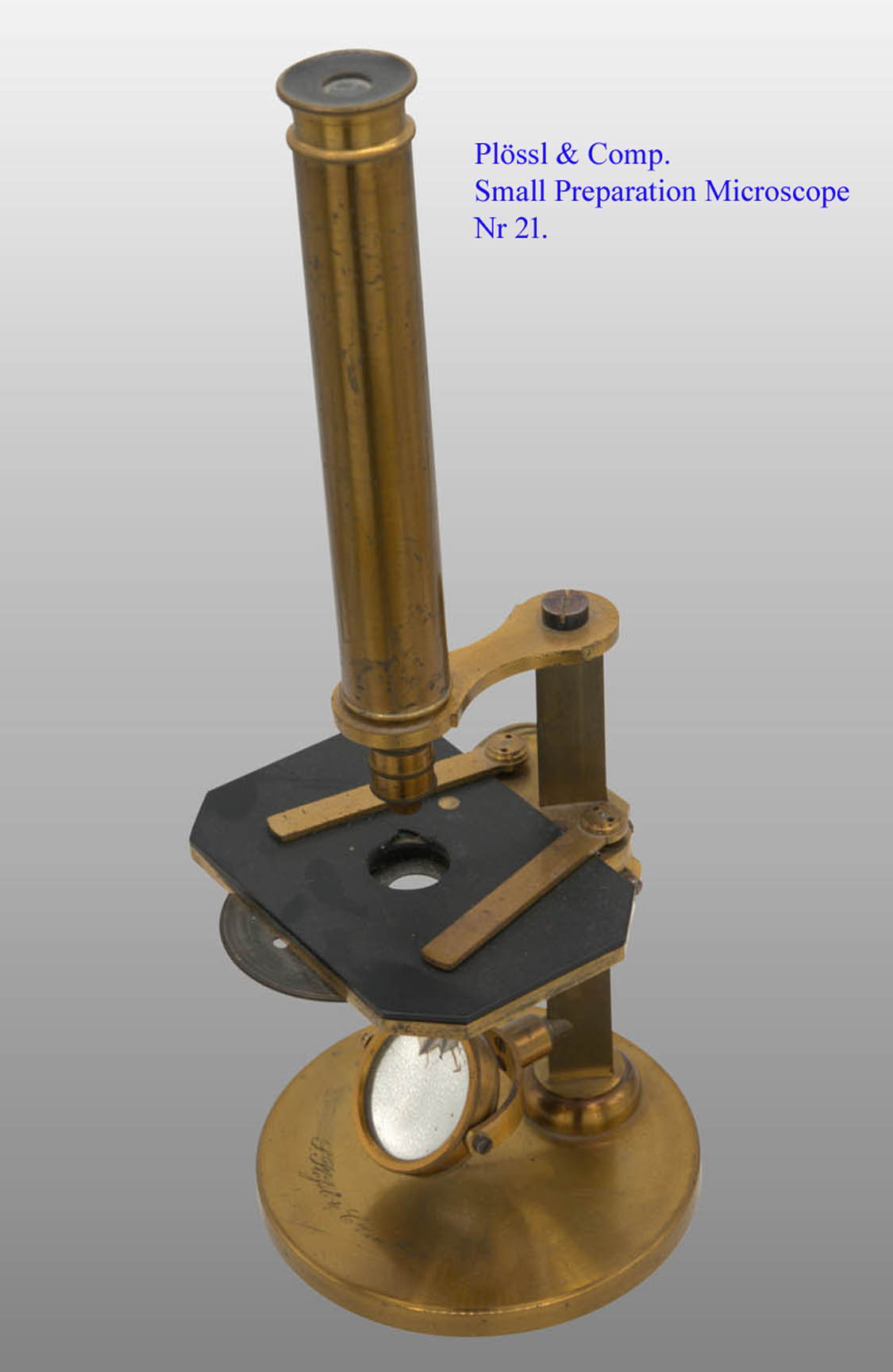
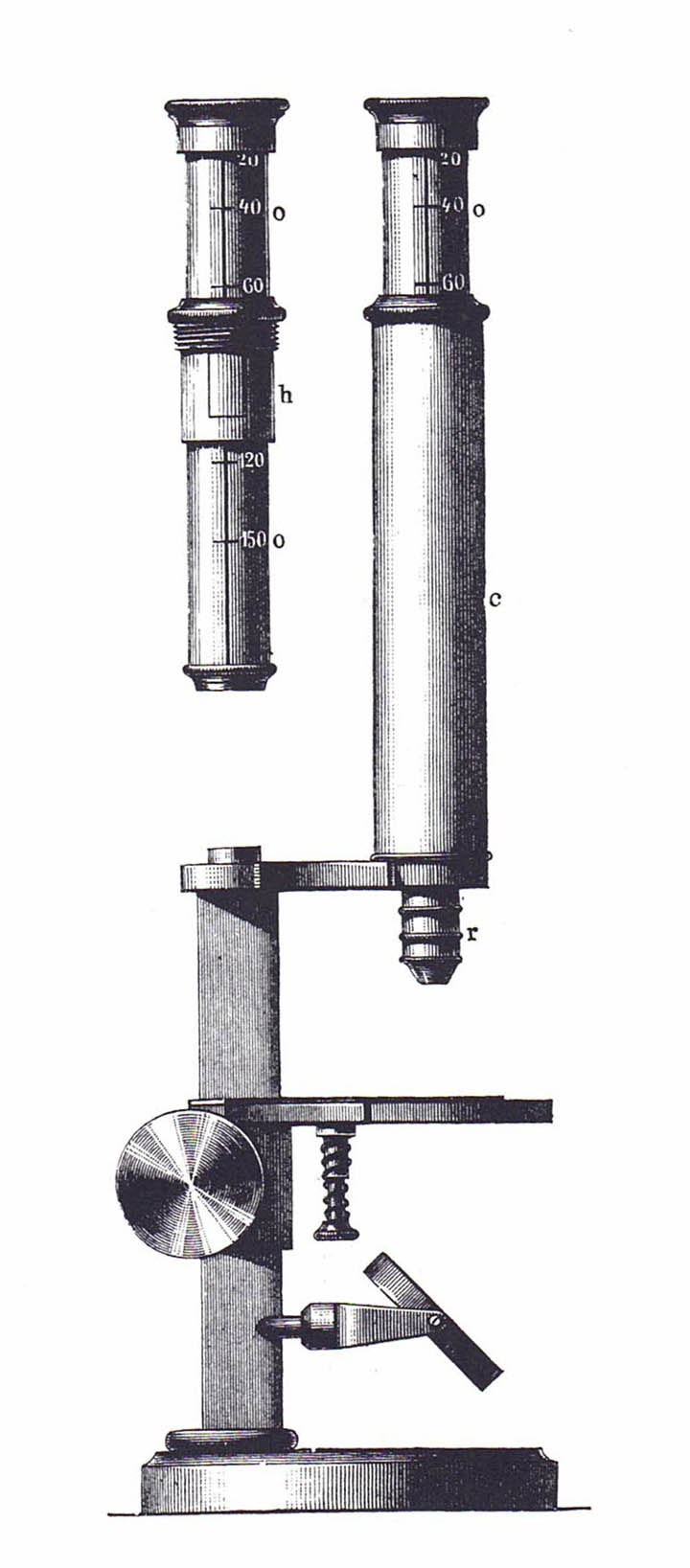
A smaller version of the Preparation Microscope was No 21, an example of which shown to the left, and an engraving shown to the right. This smaller example had a magnification only up to 200X, and its drawtube was also calibrated to indicate magnification. It has the same signature on the round foot: S Plofsl & Cie in Wien
This persistent use of the long s, was more of a tribute to the old craftsmanship than persistence of an archaic form, because Plössl & company's own type of instrument had a much more modern signature in block letters.
In the 1871 price list from Frey, the smaller preparation microscope was listed as number 7 and the larger preparation microscope as number 8. Interestingly, they were not listed in the 1871 price list as "Plössl's" models and in fact were purported to be a "new" form.
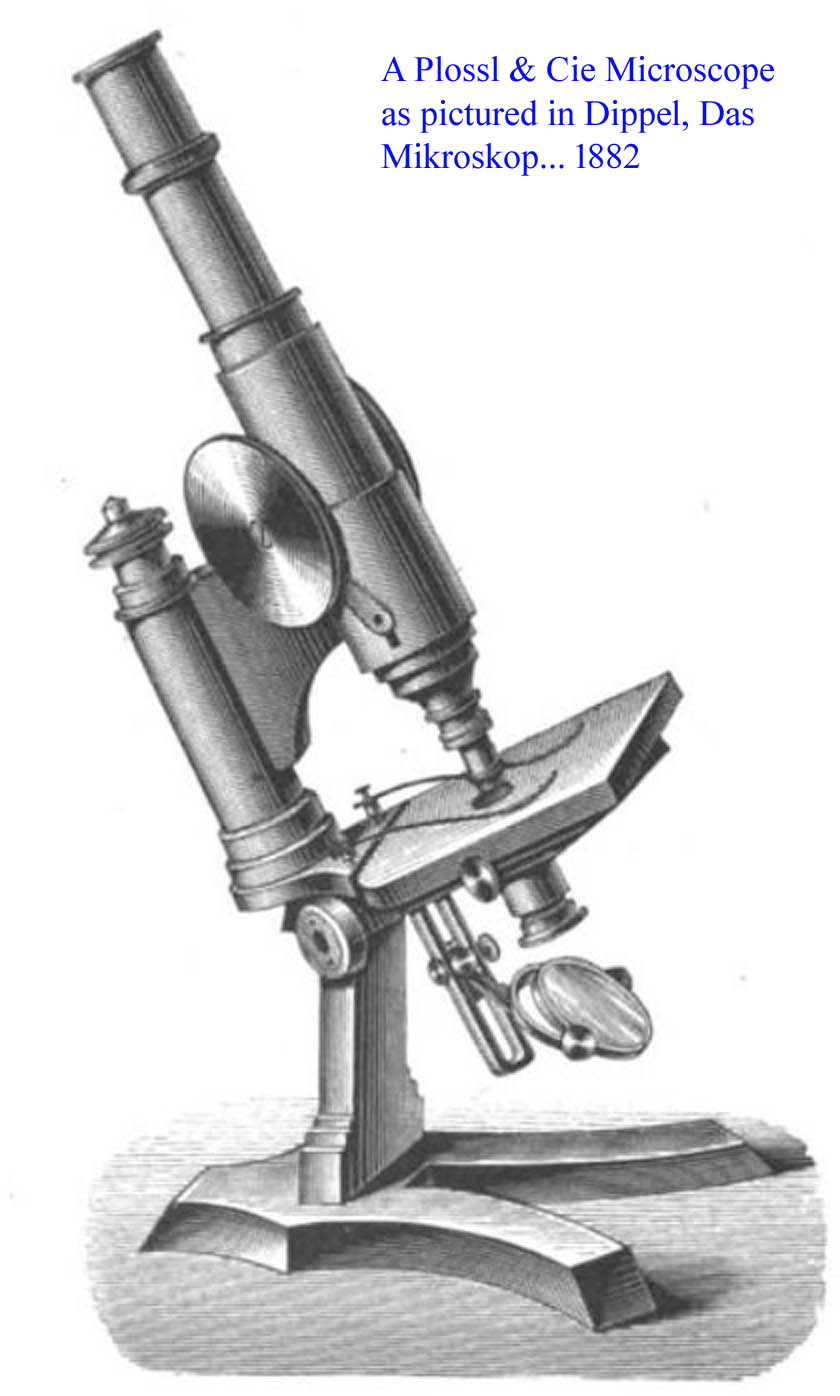
The Plössl & company's original models were more modern than their Plössl models, but the latter were still offered in the 1874 catalog. The more modern form was still pictured later as shown in Dippel's book from 1882. Although overall resembling continental stands of the time, the two largest of the Plössl & Co models had a coarse focus that was raised and lowered by a lever driven by the knob rather than rack and pinion. Plossl & Cie. continued to sell microscopes as late as 1905. For other earlier examples and more historical information please see Yuval Goren's review on his website.
QUALITY AND RESOLUTION:

This is a relatively low power instrument. It has no fine focusing mechanism. The coarse focus has a lot of play
between the teeth, making it difficult to get a good sharp focus. The numerical aperture of the higher power configuation is about 0.35 and for the lower, about 0.25. As can be seen in the accompanying images of test grids, there is significant chromatic aberration, and spherical aberation, especially outside the center of the field of view; click on the images for an enlarged view. It does have the advantage of erect image viewing. Using this microscope, and comparing it to others of the same time period, it is quite an inferior instrument.
CONDITION AND RARITY:
Microscopes by Plössl as well as Plössl & Company are quite uncommon. In fact, in 1972, Hoelzl et al, authors of the article noted below about Plössl, could not locate a single microscope signed Plössl & Cie. Plössl himself was known to have made several sizes of compound microscopes, a handheld simple microscope with Lieberkuhn and a single-lensed dissecting (pancratic)microscope. Microscopes known to exist signed by Plössl alone seem much more plentiful today than those signed by Plössl & company. Since the latter was a later company, existing well into the 20th century, this may seem puzzling. A review of advertisements by Plössl & company may provide part of the answer; Plössl & company sold many products, not just microscopes. In fact they seemed to specialize in projection apparatus.
According to Hoelzl et al, the numerical aperture of Plössl objectives reached as high as 0.62, but I am unaware of tests of the Plössl & Comp objectives that are more modern in construction. In the higher power configuration (1+2+2), the objective with this microscope has an n.a. of about 0.35 and the lower power configuration(1+2) is about 0.25 or less.
The Royal Hungarian Vocational School of Mechanics and Electrical Engineering, Budapest apparently existed from 1898 until well into the second quarter of the twentieth century.
REFERENCES:
Hoelzl, J, Bancher, E, Kotlan F (1972): Concerning the Microscopes of G.S. Plössl. Quekett J of Microscopy 32: 173-188.
S. Plössl & comp (1874) Verzeichniss der Achromatischen Microscope und deren Neben-Apparate aus dem Institute der K.K. Hof-Optiker. (Vienna)

 This is a Plossl & Company microscope signed in fancy script:
This is a Plossl & Company microscope signed in fancy script: 


 George Simon Plössl (1794-1868) was an apprentice to Johann Friedrich Voigtlander(1778-1857) until 1823 when Plössl opened his first workshop in Vienna in the former home of his parents. Plössl is famous for making all of his own lenses until the time of his death, and also inventing the Plössl eyepiece, still used today with modern telescopes. Evidence shows his first microscopes were made no later than 1826 and his first price list was from no later than 1828. The earliest larger compound Plössl microscopes typically stood on a folding tripod foot and had a straight limb and his eyepieces screwed in to the optical tube during this early period. By the 1850s, Plossl was making microscopes that stood on round bases instead of tripods, and the the eyepieces now inserted into the tube instead of screwing in. During this period the stage was round with a glass top surface. Plossl died after a serious accident on January 29, 1868. Plössl microscopes are very highly valued by collectors, and early models are very uncommon.
George Simon Plössl (1794-1868) was an apprentice to Johann Friedrich Voigtlander(1778-1857) until 1823 when Plössl opened his first workshop in Vienna in the former home of his parents. Plössl is famous for making all of his own lenses until the time of his death, and also inventing the Plössl eyepiece, still used today with modern telescopes. Evidence shows his first microscopes were made no later than 1826 and his first price list was from no later than 1828. The earliest larger compound Plössl microscopes typically stood on a folding tripod foot and had a straight limb and his eyepieces screwed in to the optical tube during this early period. By the 1850s, Plossl was making microscopes that stood on round bases instead of tripods, and the the eyepieces now inserted into the tube instead of screwing in. During this period the stage was round with a glass top surface. Plossl died after a serious accident on January 29, 1868. Plössl microscopes are very highly valued by collectors, and early models are very uncommon. 



